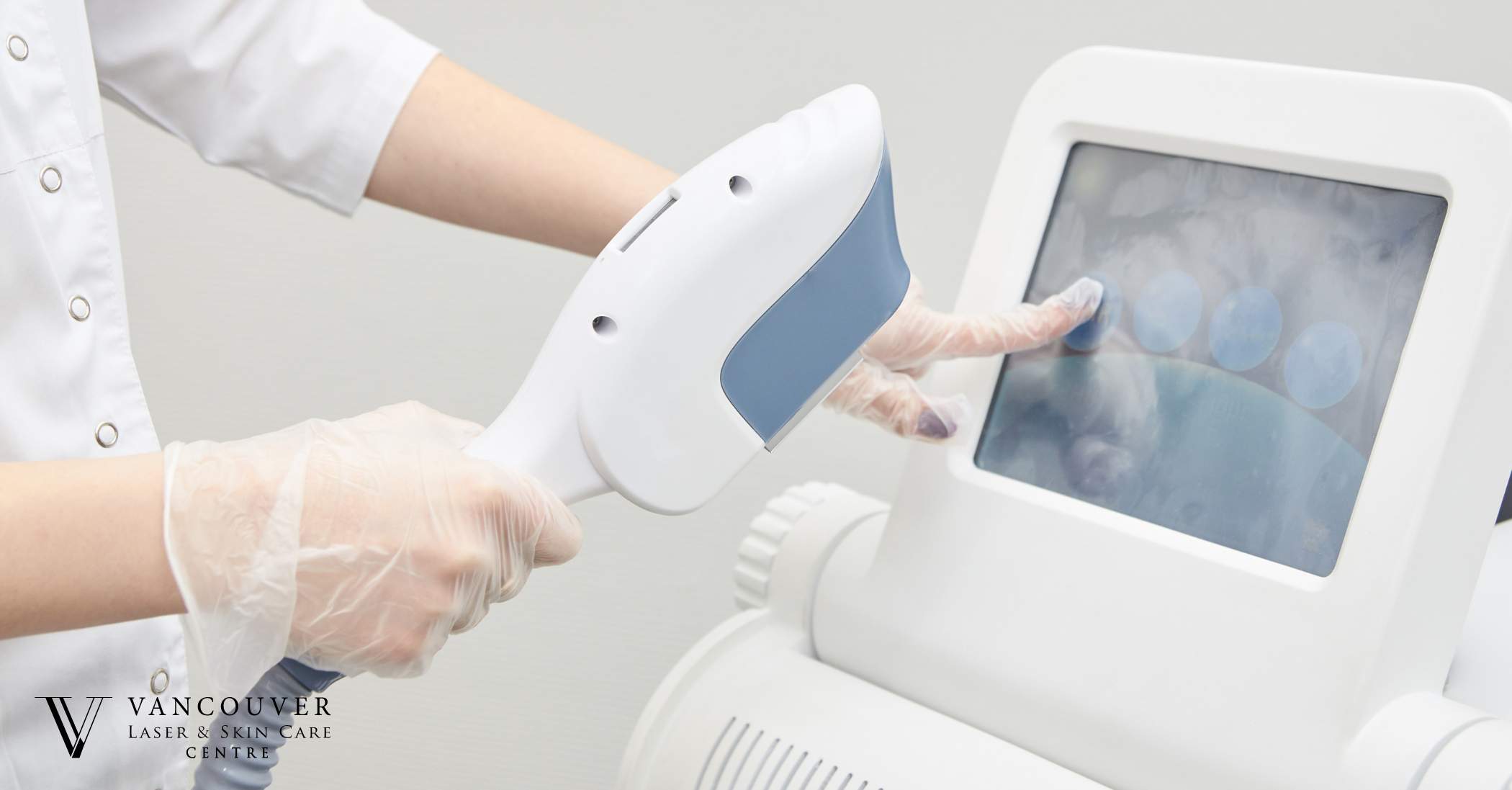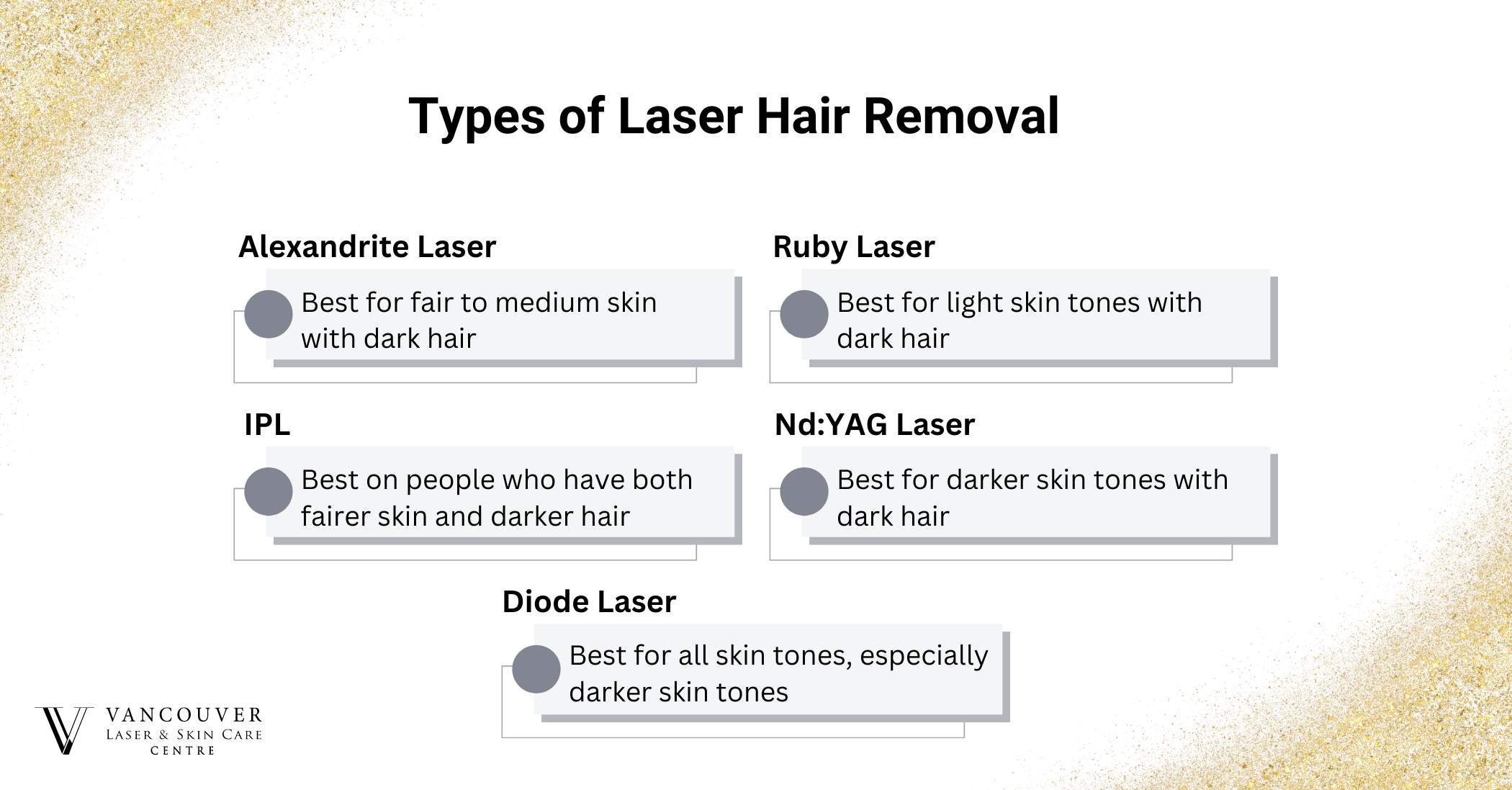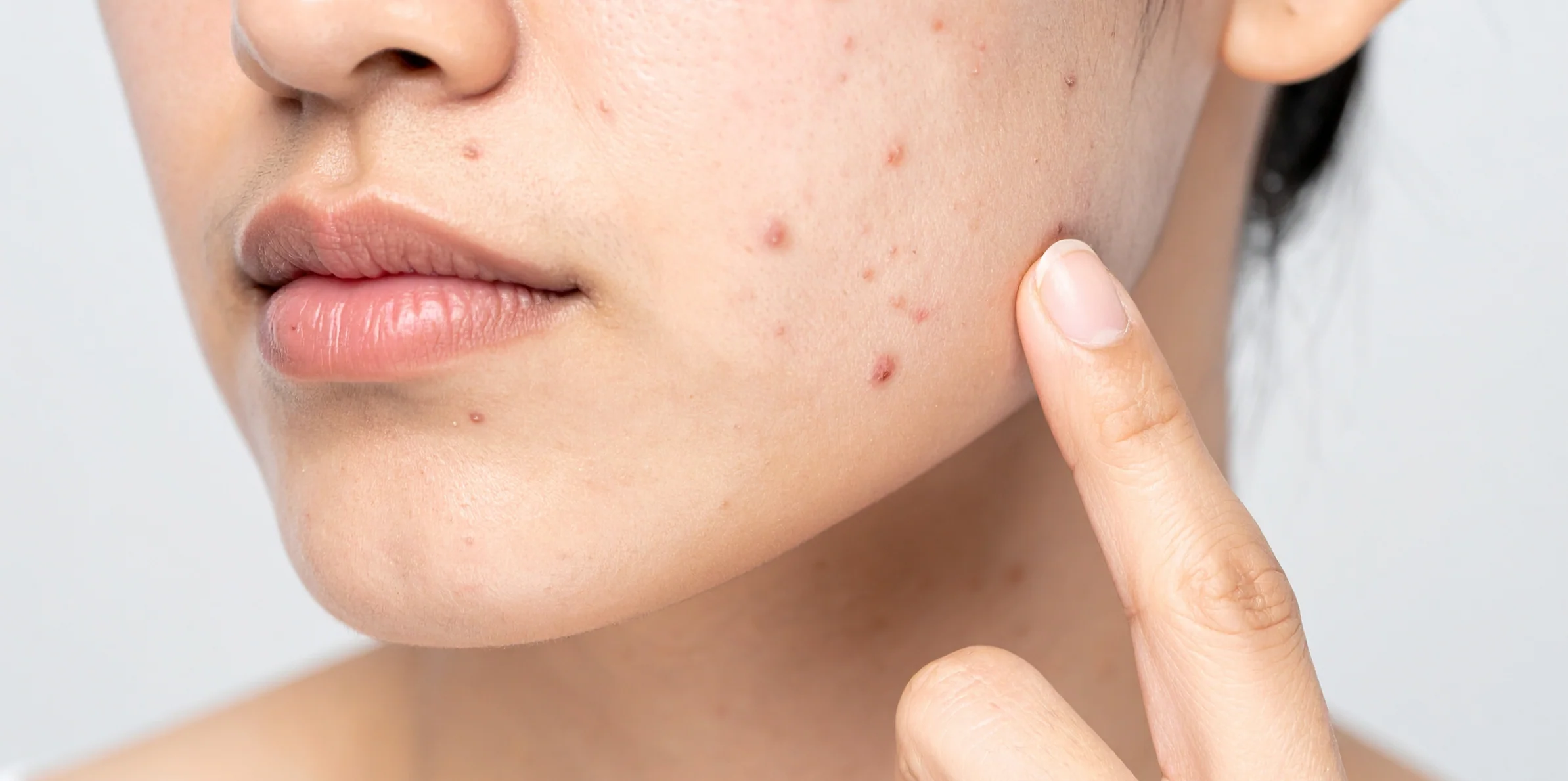Nowadays, laser hair removal is the best choice for those people who are interested in long-term treatment for excessive hair. Technological advancement has come along with several types of lasers that have manifold characteristics and benefits.
In this blog post, we will go into detail about the various types of laser hair removal to help you make well-informed decisions about which one would suit your specific needs best.

Different Laser Hair Removal Technologies
There are several laser hair removal technologies available. The four common kinds include Nd:YAG, Alexandrite, Diode and Ruby.

Nd:YAG Laser
Nd:YAG laser systems represent the latest advances in aesthetic laser technology and are the cornerstone of our hair removal services. With a wavelength of 1064 nm, Nd:YAG lasers are versatile and highly effective, safely treating all skin types, including darker tones, which are often more challenging for other technologies.
In addition to its superior hair removal capability, the Nd:YAG laser is widely recognized for its broad range of applications, such as tattoo removal and laser skin resurfacing for repairing sun damage. Both the Soprano and Fotona systems utilize Nd:YAG technology, ensuring a safe, efficient, and comfortable treatment experience tailored to individual needs.
Alexandrite Laser
The Alexandrite laser, known for its fast treatment speeds and ability to target melanin at a shorter wavelength of 755 nm, is often used for fair to medium skin tones with dark hair. However, it is less effective for darker skin tones due to its shorter wavelength and increased discomfort compared to other laser technologies.
While Alexandrite lasers are commonly available in commercial settings, they are not part of our offerings at Vancouver Laser, as we prioritize the versatility and advanced capabilities of Nd:YAG systems.
Diode Laser
The diode laser generates its energy through semiconductors called diodes, which are arranged to emit a laser beam with a wavelength of 800-810 nm. This wavelength is longer compared to other laser systems like the Ruby or Alexandrite, allowing it to penetrate deeper into the hair follicle. Because of this, most men who wish to remove hair from their chest or back opt for the Diode hair removal laser system.
Ruby Laser
The ruby hair removal laser was the first hair reduction method invented. It works by targeting melanin using a shorter wavelength of 694 nm. As a result, lighter-skinned individuals with dark hair find the most success with the ruby laser, while people with dark skin should avoid this laser altogether.

Factors to Consider When Choosing a Laser Hair Removal Treatment
Selection among laser hair removal treatments should be based on several factors:
- Skin Tone and Hair Color: The effectiveness of laser hair removal depends on your skin and hair color. Lasers work best on people with light skin and dark hair. That said, newer laser technologies have increased their effectiveness for darker skin tones.
- Hair Type: The thickness and density of your hair can influence the number of treatment sessions required. Finer hair often responds more quickly to laser treatment, while thicker, coarser hair may need more sessions.
- Area of Treatment: The larger the treatment area is, the longer the treatment will take; thus, the cost will be higher. Larger areas, such as the legs or back, may require several sessions.
- Laser Technology: Different laser types have varying levels of effectiveness for different skin tones and hair types. Consult with a qualified professional to determine the best laser option for you.
Ready for silky, smooth, hairless skin? Book your consultation today with Vancouver Laser and find out more about our laser hair removal services. Our experienced team will help you select the most appropriate laser for your needs and provide you with personalized treatment plans.
FAQs
1. Which type of laser hair removal is best?
Studies repeatedly prove that Alexandrite laser machines can destroy more hair than any other machine. Alexandrite is safe and very effective for Fitzpatrick skin types 1-3. However, those with darker skin tones should fare better with other laser technologies, such as the Nd:YAG.
2. Is laser hair removal permanent?
Laser hair removal can result in long-term hair reduction; it is not really permanent. There is the possibility of growth over time, particularly in areas of the body where hormones play a significant role in hair growth, such as face, chest and back. Most people can achieve remarkable reduction in hair after going through several sessions of laser hair removal treatments.
3. How many laser hair removal sessions are needed?
The number of laser hair removal sessions needed varies for each person, depending on factors like hair thickness, skin tone, and the results they want. Generally, 6 to 8 sessions are needed for optimal results. Some may require more, some less.
4. Does laser hair removal hurt?
Laser treatment may be somewhat painful or involve some discomfort during the procedure. Many patients have described it as the snapping of a rubber band against the skin. However, this painful feeling might not be the same for everyone and depends on the individual’s tolerance toward pain and the settings of the laser used. Most service providers offer topical numbing creams or anesthetics to reduce the pain during the procedure.



